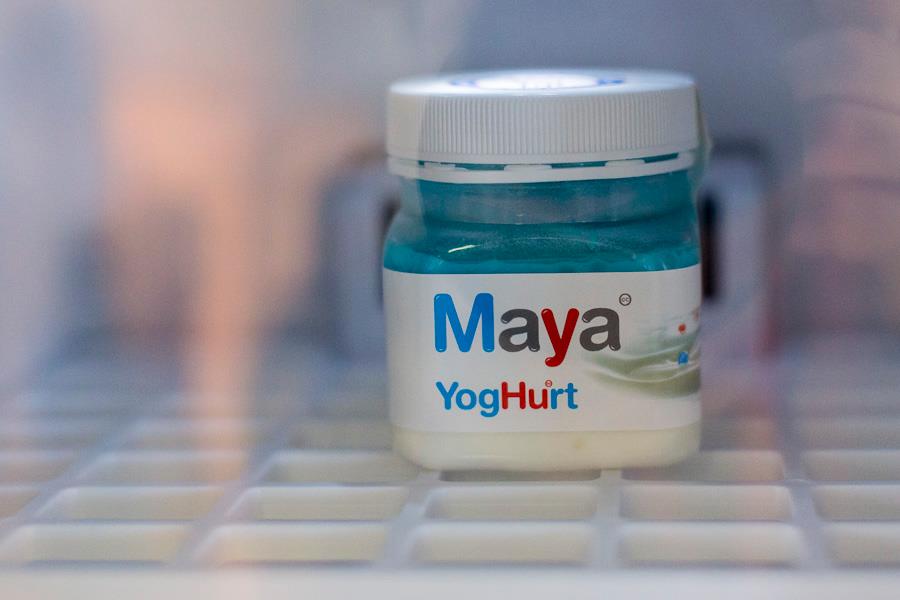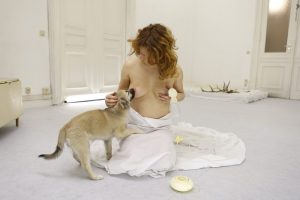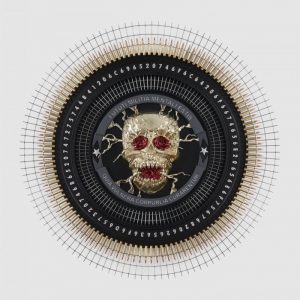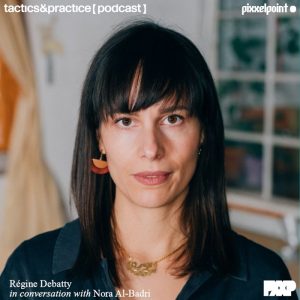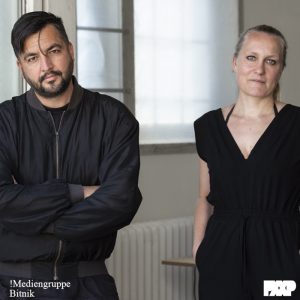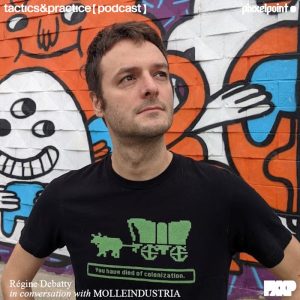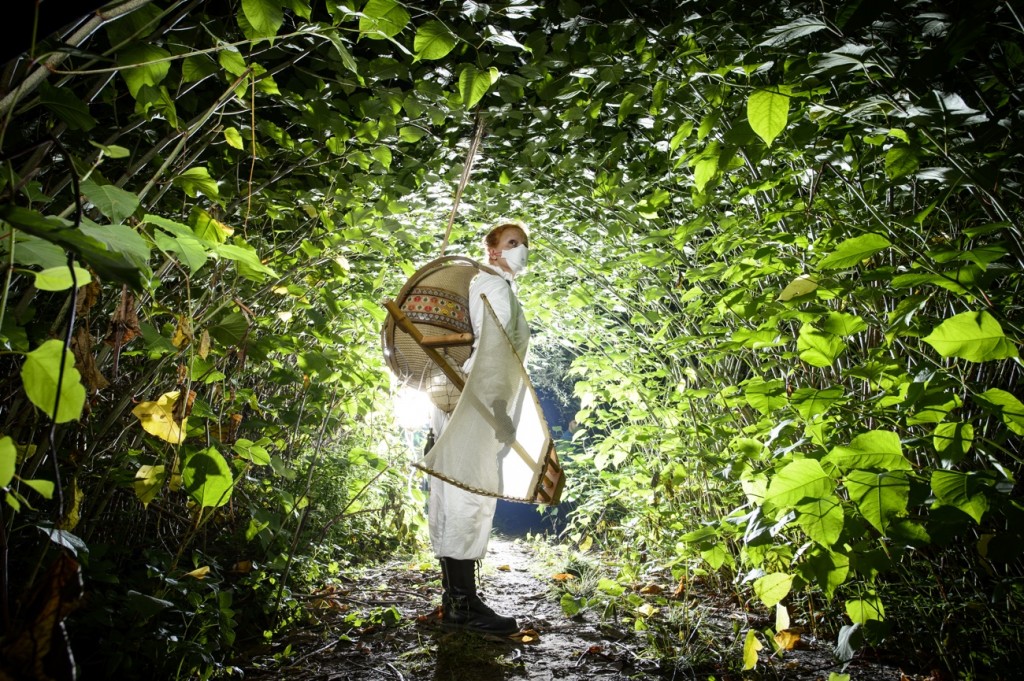
Survival Kit for the Anthropocene (Trailer), co-designed with Andrej Strehovec, produced by Aksioma Institute, Ljubljana, Slovenia, 2015. Photo by Borut Peterlin
I first discovered Maja Smrekar‘s work at FIELDS. The exhibition was part of the Art+Communication Festival in Riga and turned out to be one of the most consistently excellent events i saw in 2014. During the show, Maja was presenting the Maya Yoghurt (aka Hu.M.C.C.), a dairy containing her own enzymes. What looked a first sight like some facetious art prank was in fact a thoughtful reflection on the impact of biotechnology over the food industry, a resolutely contemporary take on Marx’s critique of capitalist modes of production and a comment on the marketing of food trends.
Maja has also devised equipment enabling biological survival in apocalyptic situations, built an installation ‘infused’ with the serotonin of the both herself and her dog Byron and explored the problem of invasive species with the help of native and tropical crayfish.
Her multidisciplinary projects may seem to be fairly different from each other but they are all characterized by a rigorous research-based approach, a deep respect for nature and a keen understanding of the issues she explores.
The artist is now in Berlin, getting ready for a weekend of performance at the Freies Museum Berlin. She will be presenting K-9_topology: HYBRID FAMILY, a new piece which is part of a body of works that investigates the parallel evolution of man and dog as well as the cultural intersections between the human and the animal.
Maja has been on my radar since 2014 and i really don’t know what took me so long to ask her for an interview.
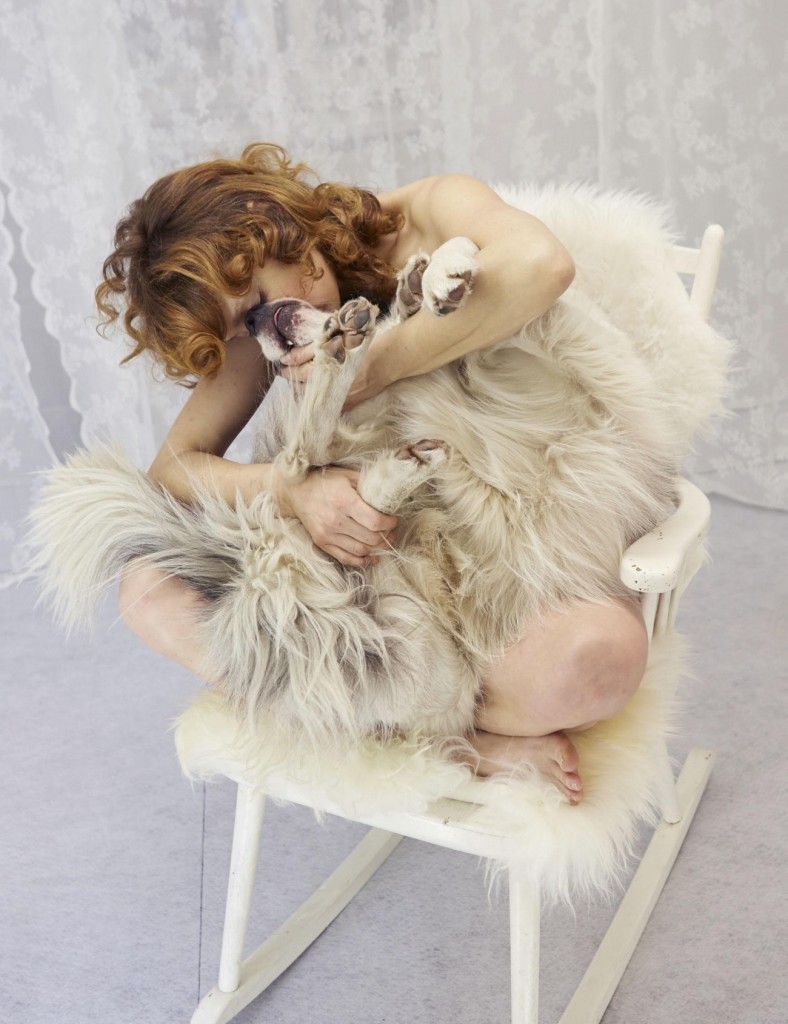
Maja Smrekar and Manuel Vason collaboration, K-9_topology: Hybrid Family, Berlin 2016, produced by Zavod Praksa, Ljubljana, Slovenia, 2015/2016
Hi Maja! You graduated from the Sculpture Department of Academy of Fine Arts and Design in Ljubljana, Slovenia. How did you go from what sounds like a ‘traditional’ art education to complex pieces developed in collaboration with scientists?
Some 15 years ago, in my early twenties, my interests have been dwelling in the phenomenology of perception of space, concept of life and all that jazz. At that time, i was interested in those phenomenons from a modernistic perspective, and this led me to think about different relationships in space, whether these would be colours and shapes or a (human) subject within. Eventually I started to research the 20th century references. And of course came to the concepts of Marcel Duchamp, Joseph Beuys, Louise Bourgeois, even the pre-assemblage phase of Picasso and Braque have been quite influential. These references allowed me to grasp how to perceive space in a very multidisciplinary way. I have also been doing lots of live video editing in clubs, running a radio show on contemporary art, working as an art director in a video game company, composing a futuristic FPS demo … I was interested in movies, scenography and costumography, especially experimental theatre, being influenced by philosophies of Antonin Artaud and Adolphe Appia, Russian constructivism … seen some live works of Marina Abramović, Robert Wilson, Jan Fabre, Marko Peljhan, Matew Barney etc. At that time, i was collaborating in different theatre performances and actually finished my bachelor diploma writing about the phenomenon of perception on live act in different space arrangements, based on my own work. Involving into all these different media was intentional since i wanted to get as much experience as possible by building my own artistic evolution in order to eventually find my own artistic thought.
After finishing my diploma within the Department of Sculpture at the Academy of Fine Art and Design in Ljubljana, i applied for the Master at the Video and New Media department. We had to do a lot of practical work, which had to be interactive and connected with technology. Hence I executed some collaborations with students at the Faculty of Computer and Information Science. That’s how it started.
Besides, being from Ljubljana with its strong tradition of avant-garde, contemporary thinking and very ambitious projects developed in the art & science field, has as well made its strong influence towards my artistic path. Even when i was young and naive, i knew i wanted to be executing multidisciplinary projects. So I have been training myself towards a specific direction from the very beginning.
Basically sculpture was my first entrance into the interdisciplinary. For me it was the way of thinking about the phenomenology of life in the widest possible sense, since space can be a body, an animal, a petri dish, a molecule, hardware, software, online, offline, nature, culture, public, private, mental, fictional, light, sound, smell, ideology, etc.
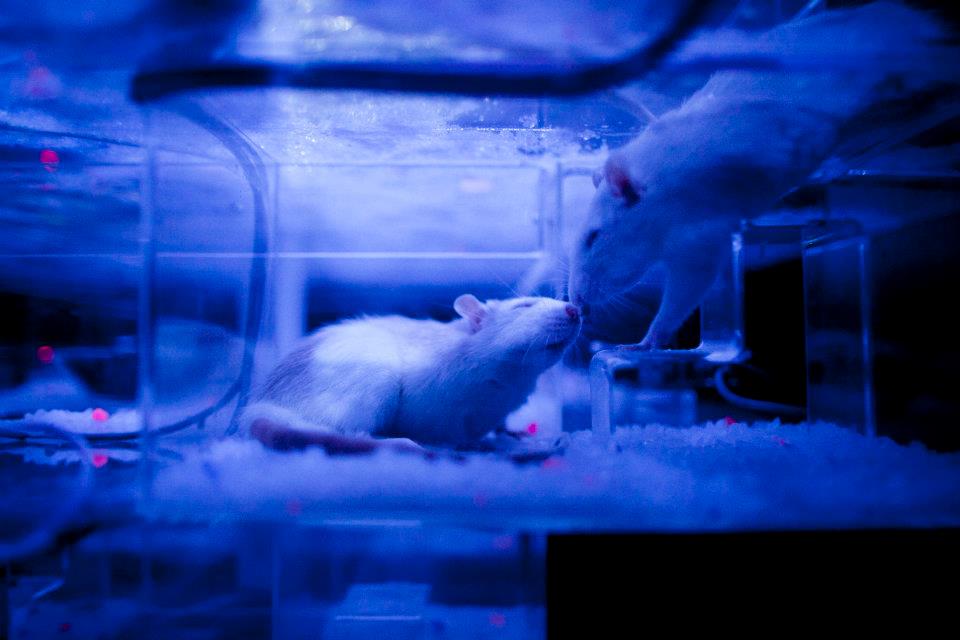
Špela Petrič & Maja Smrekar, Circadian Drift, 2012. Production: Kapelica Gallery, Ljubljana
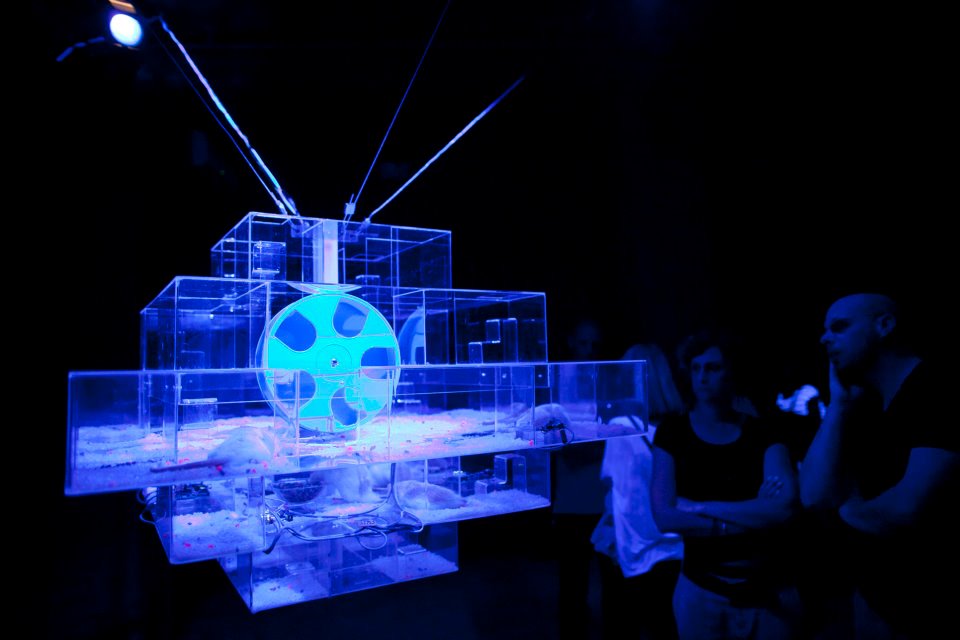
Špela Petrič & Maja Smrekar, Circadian Drift, 2012. Production: Kapelica Gallery, Ljubljana
You were talking about Ljubljana and its strong tradition of art&science project. Is this situation the result of some official support, like governmental funding and official programmes? Or is it because there is a community in Ljubljana that grew around something they are independently genuinely interested in?
For sure both. In Slovenia, there have always been strong avant-garde movements, especially in the 20s, 60s and 80s (of the 20th century), as well as at this very moment. There are countries that have been supporting this kind of art better, but neither is Slovenia the very last in supporting the so-called intermedia art. Although we have to fight to keep it since, like in every administrative system, cases of huge misunderstandings of the field and production dynamics are occurring, to say the least. Consequently there is less money but the sensibility within the art scene is very much present.
I’m also interested in the way your collaborations with scientists unfold. What are the dynamics of these interactions? Do you mostly ask them a question or give them something to develop for you and then sit back and wait till they’ve developed what you need for your work? Or do you a have a more hands-on approach and participate directly in the scientific process?
I always want to participate directly, since I want to get to know the medium as much as possible. I’m not a scientist, and therefore i would not delusion myself that i could have the same knowledge for the field that scientists have. And vice versa: scientists who want to become artists have a long way ahead in order to be able to execute mature artistic works. However, it´s all about the interdisciplinarity and the exchange of inspirational knowledge between both parties. Some of my collaborators from the field of natural sciences very much enjoyed my working approach they would not otherwise been able to engage in, within the framework of the institution they´ve been working for.
However, it is not always possible to be fully involved because of the legislation. Nevertheless, since my work is very much research-based, I have to get to know the medium in order to be able to develop a fruitful artistic concept. This kind of approach is a part of my professional ethics.
You kind of touched upon this in your previous answers but what can scientists get from a collaboration with an artist? It often seems that an artist needs the scientist more than a scientist needs the artist…
I guess this would be a question to ask scientists. They are usually so focused on their research, that if they were not interested in collaboration, they wouldn’t do it, I´m sure. Sometimes it is even problematic for them to organise the collaboration around their work, especially when the collaboration is not directly related to their usual work within a specific institution. So there must be some added value for them.
The main point i have in common with scientists i’ve been fruitfully collaborating with, is the ultimate passion for the research, accompanied with this almost childlike curiosity for the field we are dwelling on. It´s a win-win combination, if you have that in common with your collaborators. These are my experiences.
Of course; I also met scientists who would probably not have enjoyed working with me. Mental and intellectual transfer need to occur, especially in cases when the official institutional agreements have not been established, which has been, unfortunately, happening all too often.
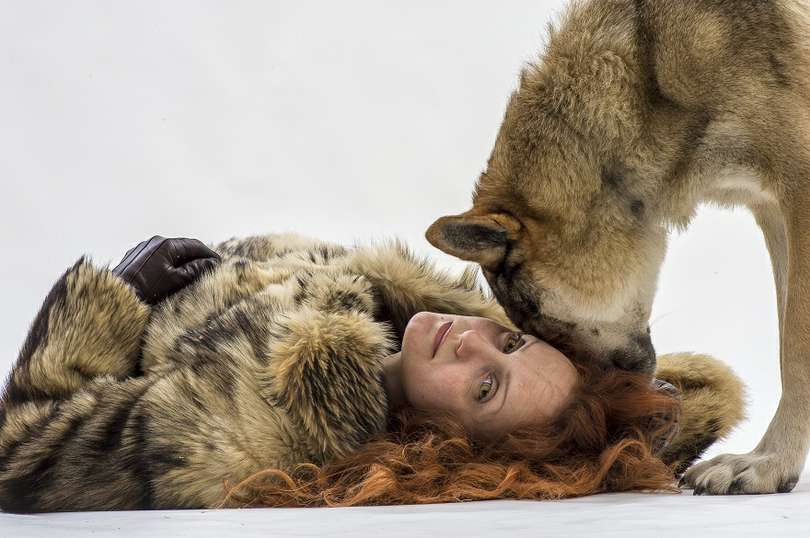
K-9_topology: Ecce Canis. Photo by Borut Peterlin

Maya Yoghurt. Design by Boris Balant / HUMAN1ST
The last time i saw you, you were making yogurt using human lactic acid. I also saw a piece in Ljubljana where you showed a furry installation that allowed visitors to experience the smell of the serotonin isolated from your own platelets and the ones of your (very cute) dog. Now you seem to be investigating invasive species. Is there anything that, for you, binds all these projects together?
In general, for the last few years, i’ve been exploring two main topics: one is the sixth species extinction, the other focuses on the research of the parallel evolution between the relationship wolf-human-dog.
At the first glance, these two topics don’t seem to have much in common, however, I find the connection within the perspective of the old artistic questions: Where Do We Come From? What Are We? Where Are We Going?
I don’t believe in ecology as it has been applied into the ideology of the first world. System is getting more and more rigid regarding sustainability. We are forced to worry about putting the trash into the correct trash can while in the third world, there is so much trash that it has even created an artificial island! The ideology is obviously working in the name of different marketing tactics. I also don’t believe that this is a problem that should be approached globally, since every little biotope is a very complex unique specific system. It is not something that could be generalised. Globalistic approach is only connected with the liberal capitalism approach – ecology as ideology, not even close within the reality of ecology as a scientific field of biology as a science.
On the other hand, we have been severely exhausting our resources of oil and gas, food and water. Homo sapiens is the biggest invasive species on the planet at the moment, the predator dwelling on the survival niches of many organisms, not at all embedding within the ecosystem dynamics, but erasing more and more species.
The other problem (which also covers one of the key parameters for the establishment of the invasive species) is that the human population has been growing exponentially. When i think about the ongoing refugee crisis i’m feeling overwhelmed: on the one hand, we have been (re)producing so much since there is so many of us already; on the other hand, we are emotionally not able to take care of each other anymore. I think that at this moment, the most humanistic and responsible thing to do would be that we stop reproducing for a while. I know this is easy to say but not even near as easy to apply, since reproducing has been imprinted all over our genetic code, as it is in every species for that matter. Not to mention the emotional and cultural dynamics connected with the need to reproduce. It is my personal frustration around the issue being a female who will in a few years not be able to biologically reproduce anymore. I’m also wondering whether it would really be ethical towards my child to introduce her / him into the world I just described. Nevertheless, it is difficult to surpass the powerful myth of motherhood and family as an ultimate individual capital with all its social pressures which have been very much present in the collective memory and emotions.
Dwelling on that, one of my next works will connect the two topics i’ve been researching for the last few years: in my fourth project within the K-9_topology series, I am suggesting to inoculate in-vitro my eggs with dog sperm in order to eventually make a new species which would have better chances to survive in the very unpredictable nature of the future. Since wolves decided in the past they wanted to stay with humans, dogs and humans have been evolving together, among other selection pressures, by a diet of starch and meat. Humans and dogs have adapted to a common biological niche by physiologically starting to be able to digest starch. Wolves still cannot digest starch. The hybrid i propose would be a herbivorous werewolf, able to digest starch as the most viable polysaccharide on Earth, but it would at the same time be able to survive by treating nature more humanely than humans do. Without ideology. This is the poetics within which the two fields of research connect.
People are going to be so shocked!
You think so? It would be only in-vitro. :)
But can you do it? Are there laws? Is it ethical? Would you have to kill it after a while?
Technologically, it could, of course, only be a proof of concept, since the cell would theoretically divide twice, maybe three times. After the inoculation, I would immediately sink it within the liquid nitrogen into cryosleep. To exist in suspense. Until the legislation is open enough and until biomedicine has evolved enough to make it possible to impregnate a human and maybe also a dog.
The inoculation of human and canine material is not legal in EU, even if both parties agree. So much on owning our own bodies. So here´s another huge problem, since I am not interested into executing the project as an illegal action. From this perspective the concept, among others, raises some biopolitical questions about why only the rich and hence privileged individuals, such as Walt Disney for example, who froze his head in order to be reanimated in the future, would be able to execute such „edgy“ actions? Are only the rich able to be the owners and not just the inhabitants of their bodies? This is, of course, a rhetorical question.
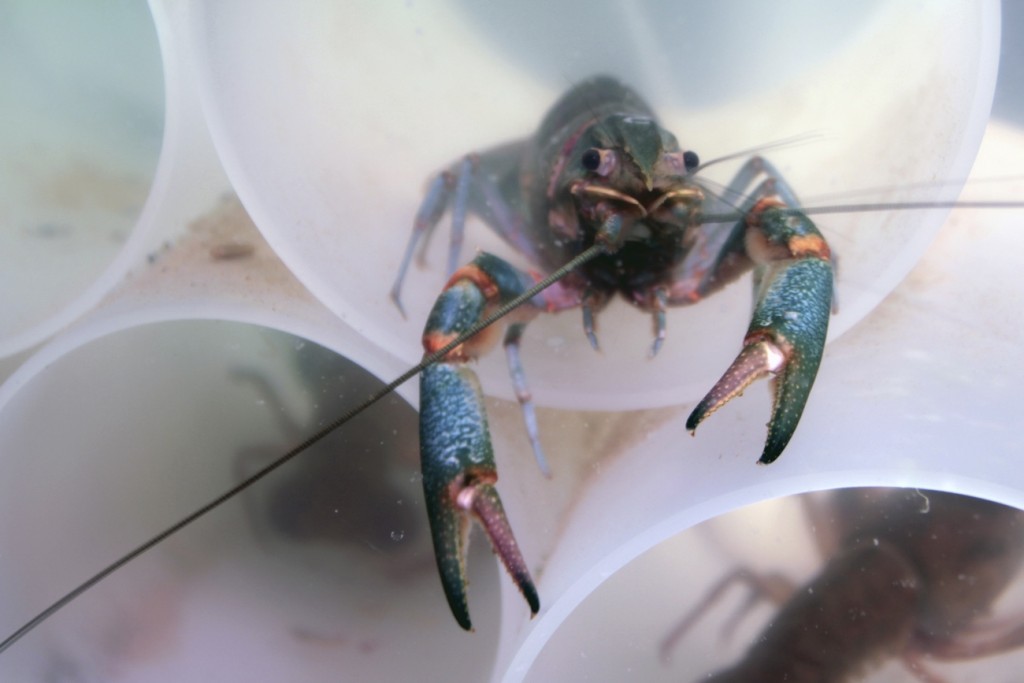
BioBASE, produced by Aksioma Institute, Ljubljana, Slovenia, 2014. Photo by Janez Janša
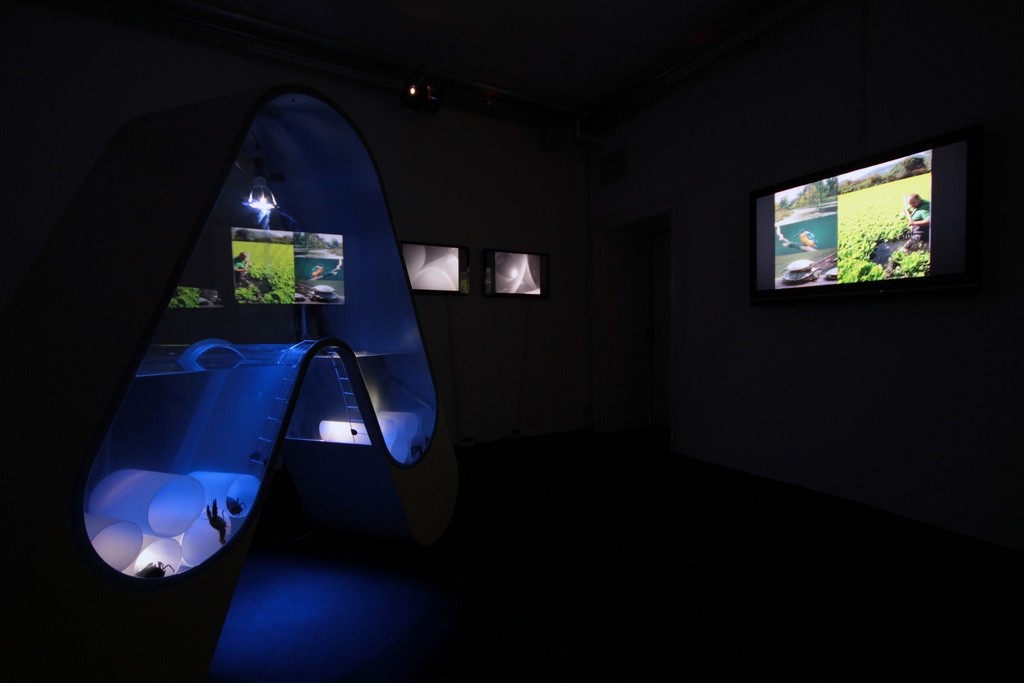
BioBASE, co-designed with Andrej Strehovec, produced by Aksioma Institute, Ljubljana, Slovenia, 2014. Photo by Janez Janša
In BIOBASE, you built an experimental chamber to monitor what would happen if/when a native crayfish and an invasive red crayfish meet. So what happened during this experiment? Did one eat the others? What were the conclusions of the work?
In Slovenia (ironically at the Schengen border), there is a thermal lake (up to 32 degree celsius). It’s a kind of a tropical ecosystem niche in the central European climate, a potential one where the tropical crayfish could survive. The subtropical Australian red claw crayfish arrived to the lake from a few hundred meters away, where an entrepreneur had started an exotic crayfish farm a few years ago. Apparently, they are a delicious so he wanted to sell the crayfish over the Italian and Croatian food market. When he started running the farm, an environmental agency came to inspect the parameters which should satisfy the regulations. It turned out that the filter system was just a bit to rarely spaced, however he was told that since these were tropical species, they would never survive in the cold water environment such as the continental climate of that area in Slovenia, if ever they escaped anyway. However, the fertilized eggs somehow got through the filtration system into a little creek, a few hundred meters from the thermal lake and eventually floated to the lake which led to a huge, exponentially growing population of the red claw crayfish. Less than a kilometre away, there is the river Sava that eventually joins the Danube. What if the crayfish adjusted to the colder climate and migrated to the nearby river? BioBASE was exhibited as a closed, controlled experiment basically exploring that question.
The conclusions were interesting. In one tank there were six invasive, tropical red claw crayfish Cherax quadricarinatus. In the other one, six indigenous ones, now protected Astacus astacus. Both in separate tanks, each with an optimum temperature to their physiology.
Since crayfish are dominant and territorial, both species obviously wanted to explore the other tank. For the first week, the tropical ones would go to the colder water but they would stay there for about maximum six days and then go back. They got too cold. At the beginning of the following week however, the indigenous ones which are bigger, yet slower but used to harsher environment, went to the tropical tank and stayed there for 10 days, until the end of the experiment.
The experiment actually showed us that since the indigenous crayfish felt comfortable in the warmer tank, it might mean that the cold river nearby might not be as cold as it used to be. Recently it has even been officially announced by scientists that all of the waters all over the world became a few degrees warmer.
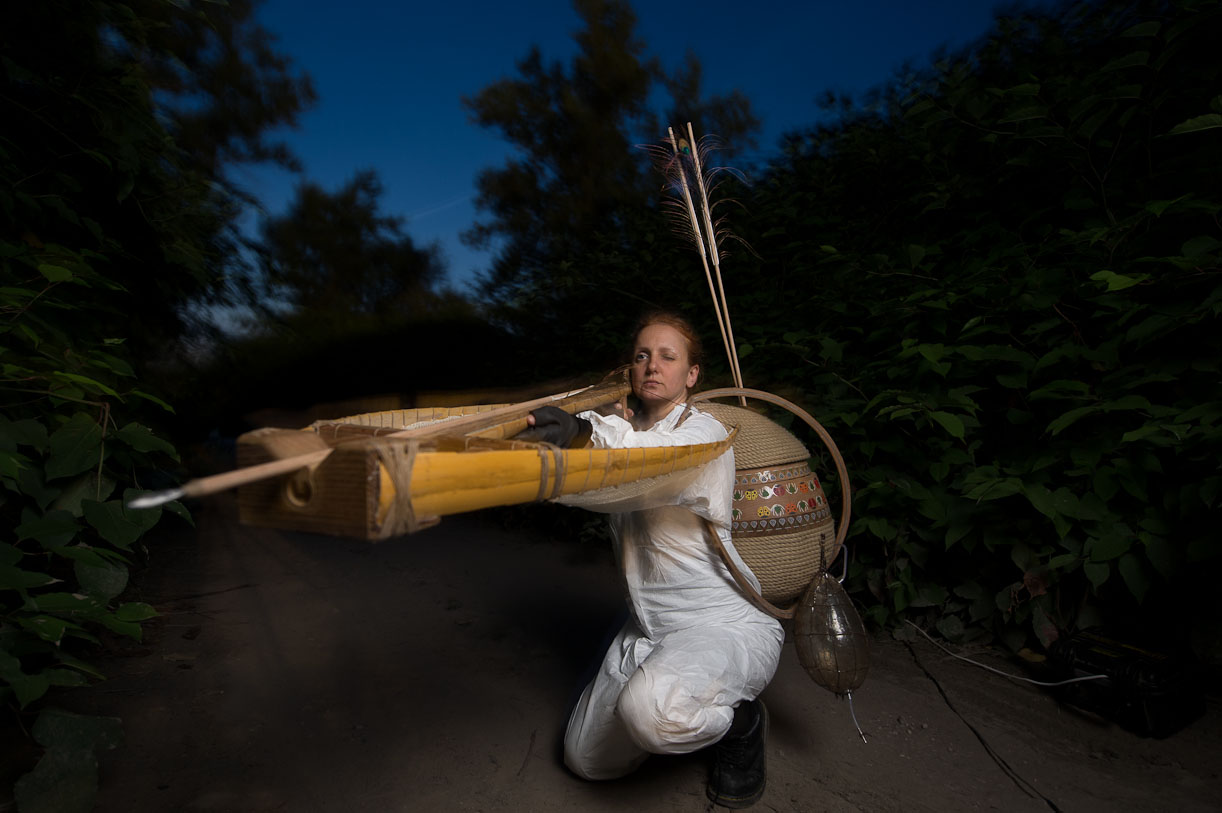
Survival Kit for the Anthropocene (Trailer), co-designed with Andrej Strehovec, produced by Aksioma Institute, Ljubljana, Slovenia, 2015. Photo by Borut Peterlin
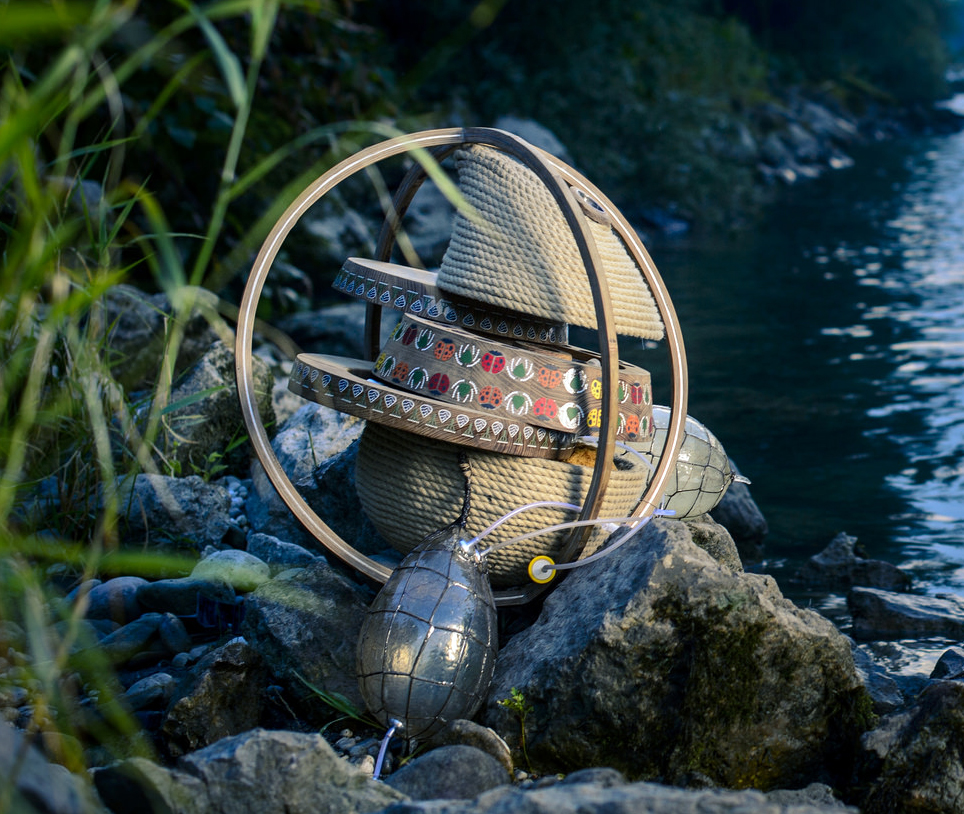
Survival Kit for the Anthropocene (Trailer), co-designed with Andrej Strehovec, produced by Aksioma Institute, Ljubljana, Slovenia, 2015. Photo by Borut Peterlin
I find it difficult to make up my mind about invasive species. On the one hand, i love animals and think they should all be protected. On the other hand, i remember growing up with red squirrels in the garden and i haven’t seen any for ages now, they’ve been replaced by invasive grey squirrels so i wish these bastards had never set foot in Europe! Do you ever feel that you need to take a stand in your work about invasive species? And decide whether invasive species are ‘wrong’ or ‘right’?
Human emotional transfer towards the local environment connected with invasive species interests me a lot. The squirrels are a great example and there are many very similar cases. At the beginning, when i knew very little about the topic, i read an article about the harlequin ladybug. There used to be indigenous seven-spot ladybirds in Slovenia and all over Europe, including United Kingdom. I had a strong emotional transfer towards them, since they were charismatic bugs, used as local heroes helping farmers and gardeners as biological control agents in a battle against aphids (their main prey) as well as a national symbol. I was so overwhelmed discovering they have been almost extinct in Europe, because of the harlequin ladybug, i decided to make a project out of the issue. Conversely, I discovered they have outcompeted many native species all over North America. The project ended up focusing on the crayfish, a phenomenon in the area of my birth town.
For the first 5 months, i was having interviews with Dr. Al Vrezec, a biologist working at the Department of Freshwater and Terrestrial Ecosystems at the National Institute of Biology in Ljubljana, Slovenia. I invited him to be a key collaborator. Every week, we would meet for a few hours. I would arrive with fresh questions and we’d discuss the topic. I wanted to grasp what it means when a certain species is getting extinct, not just for the sake of my own emotional transfer, but above all, objectively, why and how is it happening, and last but not least, why is it such a huge issue?
There have always been this kind of phenomenons, since some animals bring non indigenous organisms to another biotope where they don’t have natural predators, and therefore have conditions to exponentially grow in population which also means they eventually need more and more space. They dwell into the ecosystem niche of indigenous species and usually erase them which consequently makes the whole ecosystem crash. The global traffic in the seas for example creates big problems for ecosystems, since big tankers and even small boats carry ballast water which needs to be evacuated in the harbour. Small not indigenous organisms get out that way. Another example is when people buy exotic species in the pet shop and at some point, decide they don’t want, or can´t take care of them anymore so they ‘let them free’.
The problem of the current species extinction is that it remains fairly under the radar, since it´s quite a complex issue of interdependence to fully grasp. If a big ecosystem crashes, for example, the first organisms that adapt are the very simple ones. The more „simple“ an organism, the faster it will adjust to fast and radical environmental changes.
There have already been five distinct extinctions in history of the planet Earth. Each time, the most simple, hence the lowest organisms at the trophic level, survived. More complex organisms need far more evolutionary time to adapt. If the most simple organisms are the first to adapt and mutate that means that viruses will adapt quickly too. You might see new diseases developing much faster and we would be too slow to react. Not to mentions sever allergy reactions. If you take off one element, then everything else around it crashes. It’s like an economy bubble burst.
The other thing, as already mentioned before, is that humans are growing in population very fast, and therefore we are slowly but surely facing the end of food resources. Add climate change on top of that.
I have been having a vision of this Mad Max scenario coming up in the near future! The invasive nature outgrowing the huge old wheels of liberal capitalism system till no return is possible. I think that the revolution we are going to experience in the future is going to come out of nature. This is what is going to disable the liberal capitalism machine, not the internet, real estate, energy, watter – market bubbles.
To tell you the truth, i don’t see the happy ending for this planet as it is. Well, I can actually see a happy ending for this planet but it would involve the extinction of many species. Most probably also humans. That’s why i decided to propose the herbivorous werewolf project.
To finally answer your question, i am not putting myself on any side, i’m just the nihilistic observer of the beginning of the end of a specific biological as well as cultural era.
Any upcoming project, event or research you want to share with us?
I have been finishing the third project within the K-9_topology series in Berlin, titled Hybrid Family. The whole process has been a kind of an embodiment of a becoming – animal discourse with an impact on perspective of the refugee crises and the lack of space (this being told cynically), the myths of motherhood, home and domesticity. Since mid October, I have been living in quite an isolation with my dogs. By submitting myself to a special diet and physiological training, I have consequently succeeded to train my pituitary gland to accumulate prolactin hormone to produce some milk within my breasts, with which I will be feeding a new member of my hybrid family, an Icelandic Spitz called Ada (Lovelace), at the performance starting 29th January. The name combines with (Lord) Byron, my older family member Scottish Border Collie, as they are both my beloved inspiration embodiment of art and science as well as of the post-anthropocentric kinship.
For the last months all three of us have significantly deepen our relationship within our hybrid family, with the aim of raising thoughts on the traditional perspective of motherhood. Social welfare systems have, for example, been very much protecting families with children, married couples as well as single parents, much less a childless and/or single (bi – homo – trans – hetero – sexual) individuals.
More on the background of the project: http://majasmrekar.org/blog
Thanks Maja!
Maja’s works is currently part of the exhibition GLOBALE: Exo-Evolution at ZKM in Karlsruhe, Germany. She also has a one year sound installation on the stairs of Kino Šiška Centre for Urban Culture in Ljubljana, Slovenia.
She is also going to spend the weekend at the Freies Museum Berlin performing K-9_topology: HYBRID FAMILY (the studio visit will take place from 29 January to 2 February, by appointment.) The event was co-curated by Jens Hauser and Jurij Krpan and developed with the artistic collaboration of Manuel Vason. It is a co-production between Kapelica Gallery, Praksa (Ljubljana), Freies Museum Berlin.
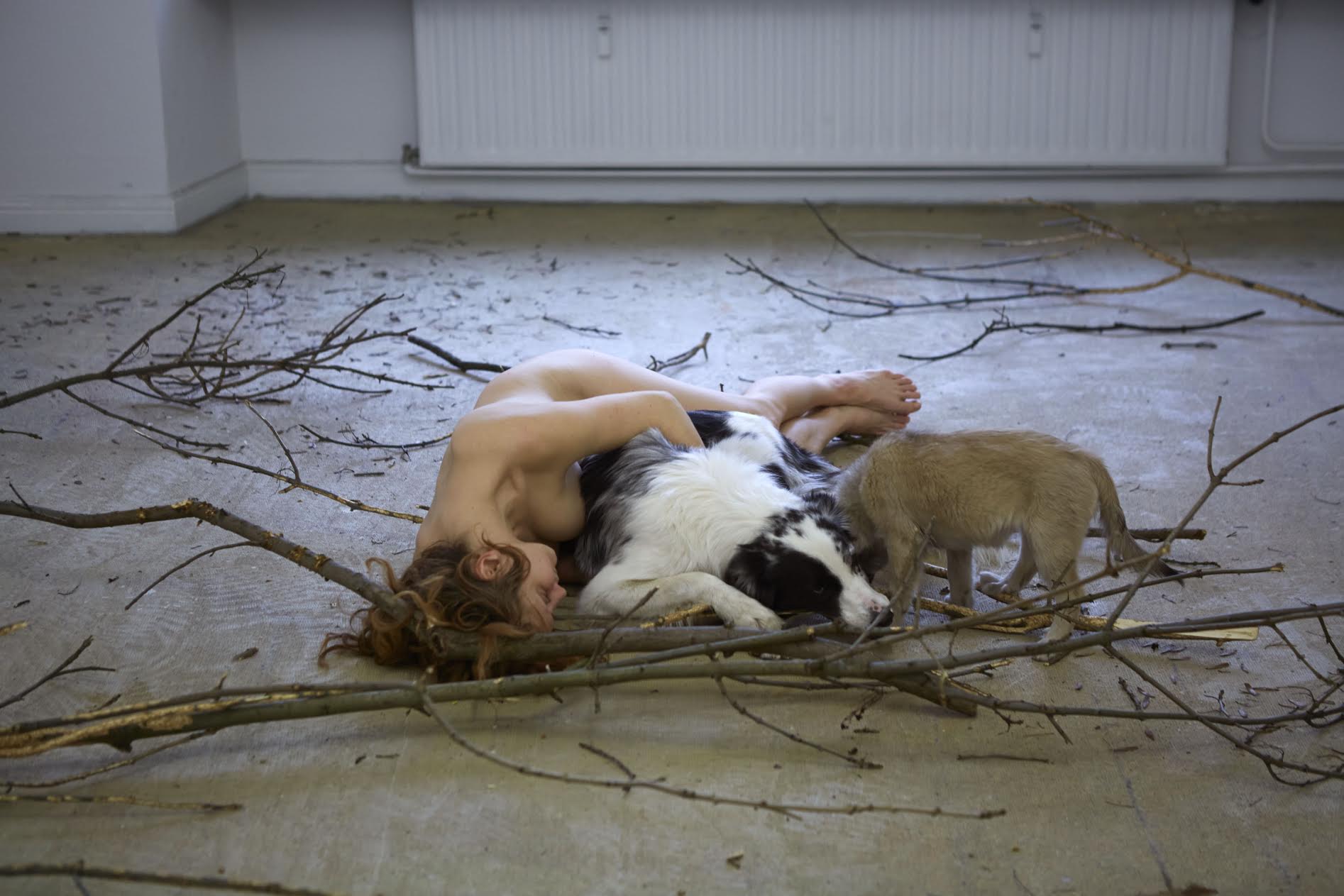
Maja Smrekar and Manuel Vason collaboration, K-9_topology: Hybrid Family, Berlin 2016, produced by Zavod Praksa, Ljubljana, Slovenia, 2015/2016

